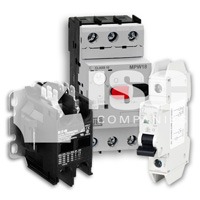 Motor Starters
Motor Starters
ISC Automation (a division of ISC Companies) is a supplier of industrial automation components and is a UL508A/698A listed panel shop that designs and builds custom control panels for industrial applications. For more information, please contact us by phone 763-559-0033, by email [email protected], or by filling out our online contact form.
A motor starter turns an electric motor on or off while providing overload protection. There are two main types of starters manual and magnetic. In smaller sizes, a motor starter is a manually operated switch. Low-voltage protection (LVP), which prevents automatic restarting after a power failure, is usually not possible with a manual starter. Larger motors, or those requiring remote or automatic control, use magnetic contactors. Very large motors running on medium voltage power supplies may use power circuit breakers.
AC magnetic motor starters for single- and three-phase operation consist of two main parts; a contactor (connects the motor to the incoming power) and the overload (causes the contactor to electrically disconnect (trip) when it senses a higher than normal current flow).
All motor starters share the following functions:
- Rated by current (amperes) or power (horsepower)
- Remote ON/OFF control
- Motor overload protection
- Starting and stopping (electrical life)
- Plugging and jogging (rapid making and breaking current)
Full-Voltage Starters
Full-voltage starters, also referred to as across-the-line starters or direct-on-line (DOL) starters, are full-voltage non-reversing (FVNR) and connect the motor to a power line. Manual starters are limited to single-phase motors through about 5 HP at 320 VAC and three-phase through 10 HP at 460 and 575 VAC. Starters are generally designed to meet either NEMA (U.S.) or IEC (Europe) standards. The two starter types differ in ratings, life, and overload types.
Frame Ratings
NEMA standards define 11 magnetic starter sizes (00 – 9) for low-voltage starters and specify horsepower ratings for each size. Ratings for IEC starters provide 15 sizes and the physical size may be smaller.
Contactor Life
NEMA standards require manufacturers to design all contactors for heavy service; so they are typically larger than corresponding IEC contactors. IEC standards define various levels of service called utilization categories. NEMA starters generally exhibit longer life.
Overload Relays
The industry has essentially discontinued the use of heater-element overloads in favor of electronic solid-state overloads, which provide greater protection. Electronic overload monitors actual motor current and takes it offline in three seconds or less when it exceeds the preset rating. They also protect against phase-loss, phase imbalance, and short circuit.
NEMA standards call for overload relays to have interchangeable heaters or electronic overloads to exhibit Class 20 trip characteristics at 600 percent of full load current. Most electronic overloads have field-selectable trip classes from 5 through 30.
Reversing Starters
Three-phrase motors are reversed by interchanging any two of the three power leads to the motor. Full-voltage reversing (FVR) starters have two contactors (run-forward and run-reverse). When a motor is running in one direction and the contactor for the opposite direction is energized, this is called plugging. The motor decelerates rapidly and accelerates in the opposite direction. When an application calls for rapid deceleration but not the subsequent reverse rotation, a motor can be equipped with a plug-stop switch. A plug-stop switch is a centrifugal switch that applies opposite rotational power to the motor for fast deceleration but drops out completely when the motor speed nears zero.
Reduced-Voltage Starters
Reduced voltage starters (RVS) are used in applications with large horsepower motors. They are used to reduce the inrush current and limit the torque output and mechanical stress on the load.
The reduced voltage starter prevents inrush by allowing the motor to get up to speed in small steps by drawing smaller increments of current. This starter is not a speed controller. It reduces the shock only upon start-up.
- Primary-Resistor Starters: The simplest reduced-voltage starter inserts resistors in series with the motor during the start phase. The system dissipates power as heat during start-up. Applications where the losses would be unacceptable often use reactors rather than resistors. Reactor starters cost more and have a lower power factor during start-up.
- Autotransformer Starters: During acceleration, a reduced input voltage is supplied to the motor through an autotransformer, which limits the current and prevents overtaxing of the motor circuit. When running speed is reached, a second contactor energizes to bypass the transformer and supplies full voltage to the motor. A third contactor is used to fill the time interval during the switch (closed-transition starter). If a third contactor is not used, it is an open-transition starter.
Reduced-Inrush Starters
- Wye-Delta Starters: During start-up, the wye-delta starter connects the three sets of windings in the stator in a series to increase the electrical resistance and limit the inrush current. When running speed is reached, a timer connects them in parallel, and all three sets of windings receive the same across-the-line voltage. These are used on low-starting torque applications like blowers or centrifugal pumps.
- Part-Winding Starters: These require motors that are specifically wired to allow the starter to make connections to only a portion of the windings during start-up. During acceleration, a timer causes a second contactor to close, energizing the other windings. A part-winding starter is the least expensive, but starting current is higher and special wiring is required.
Solid-State Starters
Solid-state starters use SCRs as variable-voltage valves. They incorporate adjustable-voltage acceleration and deceleration ramps to slowly increase motor voltage and speed to avoid shock loading and limit inrush current. Solid-state starters can use either current limit ramping or tachometer feedback. Solid-state soft-start devices are available as stand-alone units when a starter is already being used. These are popular in pumping applications.
Combination Starters
North American electrical codes require that if a branch circuit has a motor, it must also have a short-circuit protective device and a disconnecting device in addition to the motor starter. If a short-circuit condition occurs, additional protection is required in the form of a fuse or a circuit breaker. When the disconnecting device, a short-circuit protective device, and a motor starter are integrated as an assembly, it is called a combination starter.
- Fused Disconnects: Time delay fuses permit carrying heavy loads for a short time and provide long-term overload protection. They have current-limiting capabilities.
- Circuit Breakers: More convenient but at a higher price. They provide a means for disconnecting a motor and starter from the power and protecting the branch circuit from excessive current..
There are three voltage classes: low (under 600 V), medium (600 through 15,000 V), and high (over 15,000 V). The three construction types are molded case, insulated case, and low-voltage power. The breakers trip, or disconnect, when the current exceeds the breaker rating following a time delay.
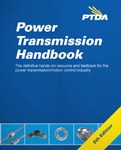 Content on this page was created using excerpts from the Power Transmission Handbook (5th Edition), which is written and sold by the Power Transmission Distributor’s Association (PTDA).
Content on this page was created using excerpts from the Power Transmission Handbook (5th Edition), which is written and sold by the Power Transmission Distributor’s Association (PTDA).
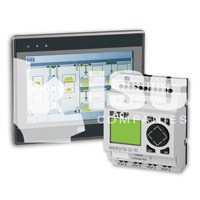
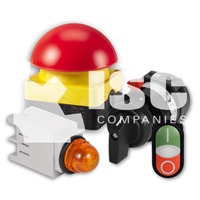
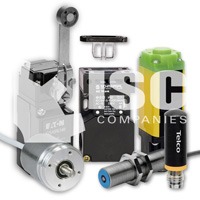
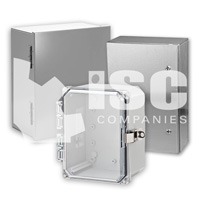
You must be logged in to post a comment.